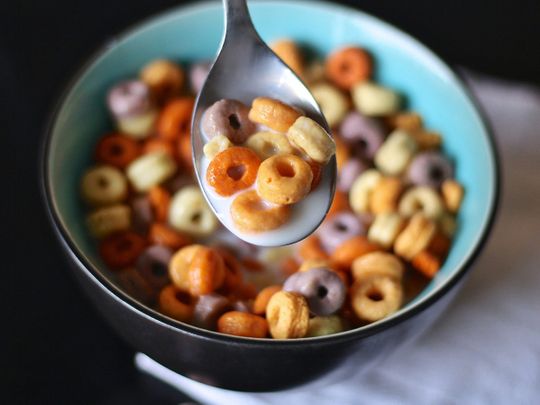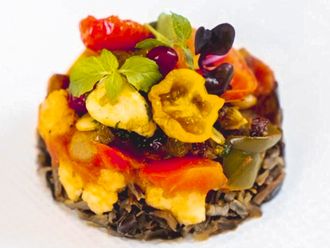
The manufacturers of the cereals that line the supermarket — and down which you and your child wheel your way through every week picking, choosing and squabbling over this or that sugary brand - are now on the mend but not entirely.
While US food companies are making healthier breakfast cereals for children, they’re also aiming more ads for their unhealthiest products at kids, according to a report.
In a study from Yale University’s Rudd Center for Food Policy & Obesity - The “Cereal Facts” — the US food industry’s actions came under scrutiny. A third of children in the US are overweight or obese. Kelly Brownell, director of the Rudd Center, lauded cereal makers for changing their recipes to boost fibre and whole grain content while reducing sugar and sodium, but said there was ample room for improvement.
“It’s not enough and the companies are still using all their marketing muscle to push their worst cereals on children,” she said.
Take a look at this: Spending to promote child-targeted cereals was $264 million in 2011, an increase of more than 30 percent from 2008, according to the Yale study, which follows a similar report three years ago.
Cereals like Reese’s Puffs, Froot Loops and Pebbles are being aggressively marketed to children and these brands rank among the lowest for nutrition and the highest for added sugar, according to researchers.
The cereal companies defended their marketing practices and their products, which, they said, continued to evolve.
Cereal makers Kellogg, General Mills and Post — to whom the above three brands belong respectively — are among companies that have signed on to the Council of Better Business Bureaus’ Children’s Food and Beverage Advertising Initiative (CFBAI), a voluntary self-regulation programme for food marketed to children in the US.
Participants have agreed to adhere to industry-created nutrition criteria for products advertised to kids under the age of 12.
Critics say those guidelines are less stringent than many health experts would like to see.
Before CFBAI was founded, some cereals had 15 to 16 grams of sugar per serving. Now, most have no more than 10 grams of sugar — or about 2.5 teaspoons — per serving.
The American Heart Association recommends that no more than half of discretionary calories come from added sugars.
Based on that AHA guideline and data from the US Department of Agriculture, inactive to moderately active young children, on average, should consume no more than 20 grams of added sugar a day.
But children, on average, consume two servings of breakfast cereal, the study said. “Before they leave the house in the morning, children eating these pre-sweetened cereals will have consumed as much sugar as they should eat in an entire day.”
















